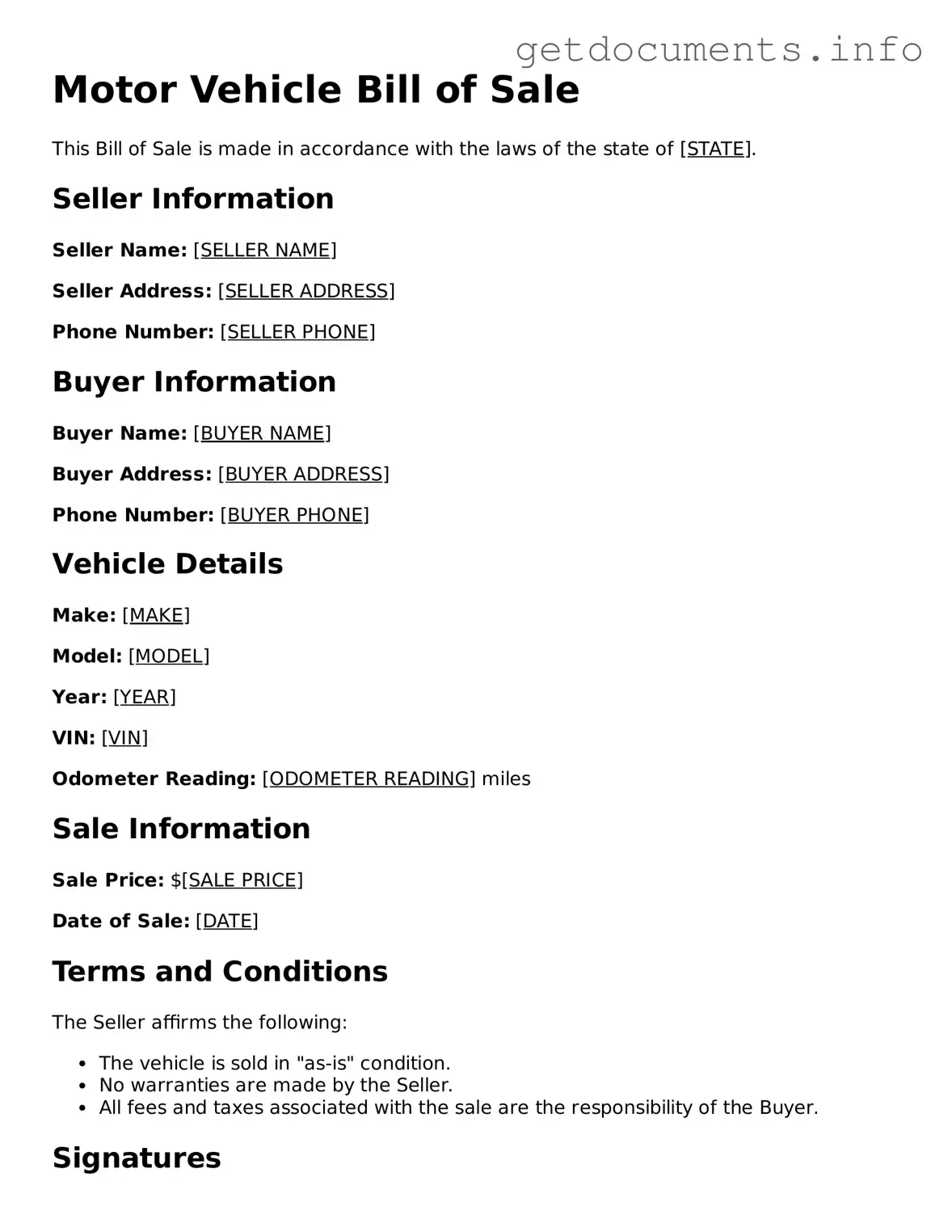Printable Motor Vehicle Bill of Sale Document
The Motor Vehicle Bill of Sale form serves as a crucial document that records the transfer of ownership for a vehicle from one party to another. This form provides essential details about the vehicle, including its make, model, and identification number, ensuring both buyer and seller have a clear understanding of the transaction. To facilitate a smooth transfer process, consider filling out the form by clicking the button below.
Access Motor Vehicle Bill of Sale Editor
